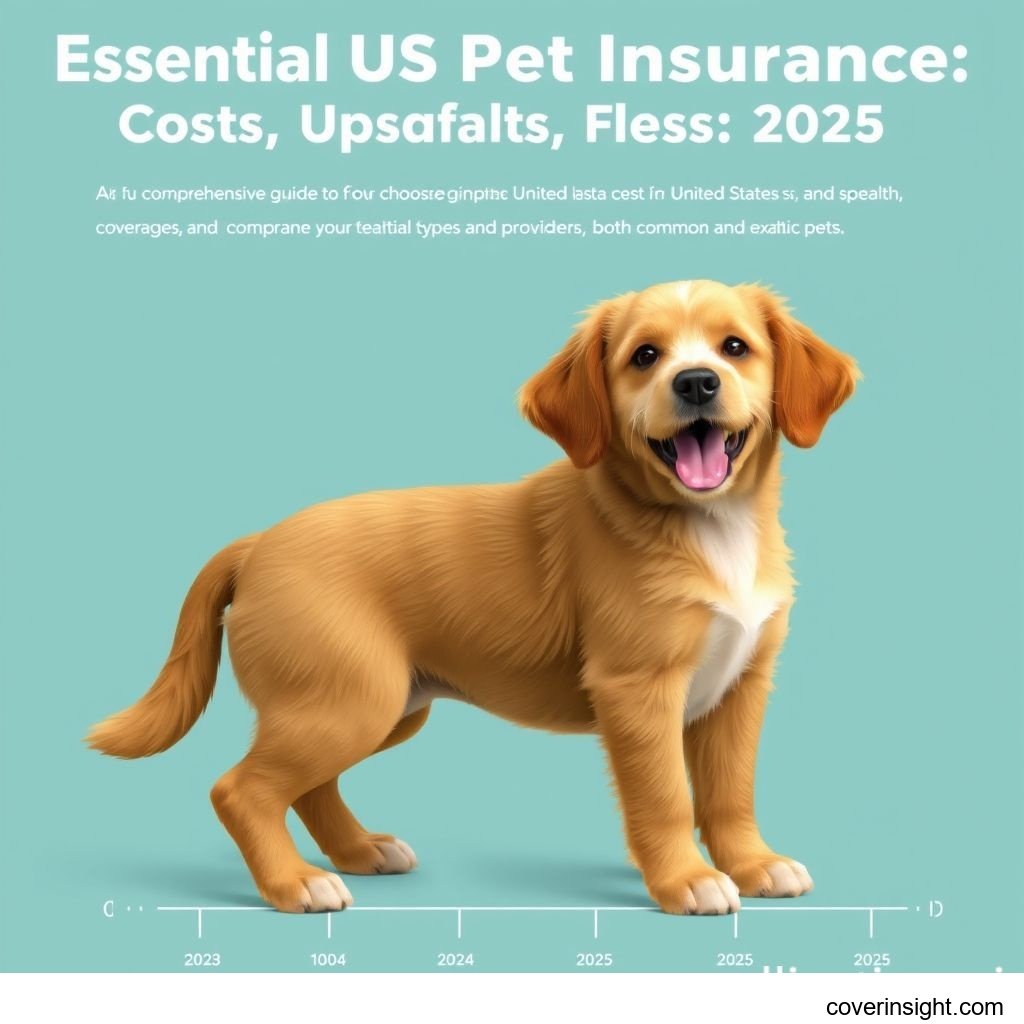Introduction
As 2025 unfolds, the landscape of pet care continues to evolve, making true companion pet insurance an increasingly vital consideration for pet parents across the US. Owning a pet brings immense joy and unconditional love, but it also comes with the responsibility of ensuring their health and well-being. Unexpected accidents or sudden illnesses can lead to staggering veterinary bills, transforming a moment of concern into a significant financial burden. Pet insurance acts as a crucial safety net, safeguarding your finances while ensuring your beloved animal receives the best possible medical attention without compromise. This comprehensive guide will delve into the intricacies of pet insurance in the US for 2025, helping you compare plans, understand costs, and make an informed decision for your furry family member.
Coverage Details
Understanding what your true companion pet insurance policy covers is paramount. Not all plans are created equal, and knowing the specifics can help you select the most suitable option for your pet's needs and your budget.
What’s Included
Most comprehensive pet insurance plans are designed to cover a wide range of medical expenses. Common inclusions typically feature:
-
Accidents: Injuries from falls, car accidents, broken bones, ingestion of foreign objects.
-
Illnesses: Cancer, infections, digestive issues, allergies, diabetes, arthritis.
-
Emergency Care: Urgent veterinary visits, hospitalization, specialist referrals.
-
Surgery: Procedures related to accidents or illnesses.
-
Prescription Medications: Drugs prescribed for covered conditions.
-
Diagnostic Tests: X-rays, MRIs, CT scans, blood tests, ultrasounds.
-
Therapies: Physical therapy, acupuncture, chiropractic care.
Some plans may also offer optional add-ons for wellness and preventative care, covering things like routine check-ups, vaccinations, and dental cleanings. Always review the policy details to confirm specific inclusions.
Common Exclusions
Just as important as knowing what's covered is understanding what isn't. Common exclusions across most true companion pet insurance policies include:
-
Pre-existing Conditions: Illnesses or injuries that occurred or showed symptoms before coverage began or during the waiting period.
-
Cosmetic Procedures: Tail docking, ear cropping, declawing (unless medically necessary).
-
Elective Procedures: Non-medically necessary treatments.
-
Breeding/Whelping: Costs associated with pregnancy, birth, or breeding.
-
Grooming: Baths, nail trims, hair cuts.
-
Food/Supplements: Prescription diets or over-the-counter supplements not prescribed for a covered condition.
It’s vital to clarify these exclusions with any provider to avoid surprises later on.
Understanding Plan Types: Accident-Only vs Comprehensive
When exploring true companion pet insurance options, you'll primarily encounter two main types of plans:
-
Accident-Only Plans: These are generally the most affordable and cover only costs associated with injuries from accidents (e.g., broken bones, poison ingestion, lacerations). They do not cover illnesses. These plans can be a good entry point for budget-conscious pet parents seeking basic financial protection.
-
Comprehensive Plans: Offering the broadest coverage, these plans cover both accidents and illnesses. They often include a wide array of services, from diagnostic tests and surgeries to prescription medications and emergency care. While more expensive, they provide significantly more peace of mind, especially as pets age.
Choosing between accident-only vs comprehensive coverage depends on your pet's health, age, breed, and your financial comfort level.
Specialty and Wellness Coverage
Beyond the core accident and illness coverage, many providers offer supplementary options:
-
Wellness Plans: Often available as an add-on, these cover routine care such as annual check-ups, vaccinations, flea and tick prevention, and sometimes even spaying/neutering.
-
Dental Illness Coverage: While dental accidents are usually covered under comprehensive plans, coverage for dental illnesses (like periodontal disease) might require a specific add-on or be included in more robust plans.
-
Behavioral Therapy: Some advanced plans may cover consultations with certified veterinary behaviorists for conditions like anxiety or aggression.
Cost Analysis
The cost of true companion pet insurance is a significant factor for most pet owners. Premiums can vary widely, influenced by several key elements.
Price Factors
Determining the premium for your true companion pet insurance involves several variables:
-
Pet's Breed: Certain breeds are predisposed to specific health conditions, leading to higher premiums. For example, large breeds might be prone to hip dysplasia, while some purebreds are more susceptible to genetic diseases.
-
Pet's Age: Younger pets generally have lower premiums, as they are less likely to develop chronic conditions. Premiums tend to increase significantly as pets age, reflecting the higher likelihood of veterinary visits.
-
Location: Veterinary costs vary by region, impacting insurance premiums. Urban areas with higher living costs often have more expensive vet services, which translates to higher insurance rates.
-
Deductible: This is the amount you pay out-of-pocket before your insurance coverage begins to reimburse you. Higher deductibles result in lower monthly premiums, but you'll pay more upfront for claims.
-
Reimbursement Level: This is the percentage of the covered veterinary bill that the insurer pays back to you after your deductible is met (e.g., 70%, 80%, 90%). A higher reimbursement level means higher premiums.
-
Annual Limit: This is the maximum amount the insurance company will pay out in a year. Plans with higher annual limits or unlimited payouts usually have higher premiums.
Saving Tips
Reducing the cost of your true companion pet insurance without sacrificing essential coverage is possible with these strategies:
-
Choose a Higher Deductible: If you have an emergency fund, opting for a higher deductible can significantly lower your monthly premiums.
-
Select a Lower Reimbursement Level: Accepting a 70% or 80% reimbursement instead of 90% can decrease your premium, though you'll pay a larger portion of the bill yourself.
-
Pay Annually: Many providers offer a discount for paying your annual premium upfront instead of monthly installments.
-
Multi-Pet Discounts: If you have multiple pets, inquire about discounts for enrolling them all under the same provider.
-
Wellness Plan Analysis: Assess if a wellness plan add-on truly saves you money compared to paying for routine care out-of-pocket. For some, it's cost-effective; for others, it's not.
-
Enroll Early: Insuring your pet when they are young and healthy is the best way to secure lower rates and avoid pre-existing condition exclusions. This is particularly relevant when considering the best pet insurance for puppies.
Comparing Providers
To find the most suitable and affordable true companion pet insurance, it’s crucial to compare quotes from multiple providers. Look beyond just the premium; consider:
-
Reputation and Customer Service: Read reviews and check the insurer's ratings.
-
Policy Customization: Can you adjust deductibles, reimbursement levels, and annual limits to fit your budget?
-
Waiting Periods: How long do you have to wait before coverage for accidents or illnesses begins?
-
Claim Process: Is it easy to file claims? How quickly are claims reimbursed?
Websites like the National Association of Insurance Commissioners (NAIC) can offer insights into consumer complaints and state regulations.
Choosing the Right Plan
Selecting the best pet insurance for puppies or an older dog requires careful thought about your pet's specific needs and your financial situation.
Factors to Consider
Before committing to a true companion pet insurance plan, evaluate these critical factors:
-
Your Pet's Specific Needs:
-
Age: Younger pets may benefit most from comprehensive plans to cover future unknowns. Older pets might need plans with robust illness coverage.
-
Breed-Specific Risks: Research common health issues for your pet's breed. For instance, Boxers are prone to cancer, while Golden Retrievers can suffer from hip and elbow dysplasia.
-
Lifestyle: Active pets might be more prone to accidents.
-
-
Your Financial Comfort: How much can you realistically afford for monthly premiums? What deductible and reimbursement level align with your budget and risk tolerance?
-
Provider Reputation: Check reviews, ratings, and financial stability. A reliable insurer ensures your claims will be paid promptly.
-
Policy Flexibility: Can you easily adjust coverage as your pet ages or your financial situation changes?
-
Customer Support: Is their customer service accessible and helpful when you have questions or need to file a claim?
Getting Started
The process of securing true companion pet insurance can be streamlined by following these steps:
-
Research Providers: Identify reputable pet insurance companies operating in your state.
-
Get Multiple Quotes: Use online comparison tools or visit individual insurer websites to obtain personalized quotes based on your pet's details.
-
Read the Fine Print: Carefully review the policy documents, paying close attention to deductibles, reimbursement percentages, annual limits, waiting periods, and exclusions.
-
Ask Questions: Don't hesitate to contact the insurance provider directly if anything is unclear.
-
Enroll: Once you've chosen the best plan, complete the enrollment process and ensure you understand when your coverage officially begins.
For general insurance resources, you can visit Insurance Resources Global. For US-specific information, refer to US Insurance Home.
The Claims Process
Understanding how to file a claim and what to expect regarding reimbursement is crucial for any true companion pet insurance policyholder.
How to File a Claim
The claims process for true companion pet insurance is generally straightforward:
-
Pay Your Vet: In most cases, pet insurance operates on a reimbursement model. You pay the veterinary bill upfront at the time of service.
-
Submit a Claim: Gather necessary documentation, including the itemized invoice from your vet visit and your pet's medical records. Most insurers offer online portals or mobile apps for easy claim submission.
-
Await Reimbursement: The insurance company will review your claim. Once approved, they will reimburse you for the covered portion of the bill, minus your deductible, according to your policy's reimbursement level.
Keeping thorough records of all veterinary visits and treatments can significantly expedite the claims process.
Reimbursement and Deductibles Explained
-
Deductible: This is the amount you are responsible for paying out-of-pocket each policy term (annually or per incident, depending on your plan) before your insurer starts to cover costs. If your deductible is $250, you pay the first $250 of covered expenses.
-
Reimbursement Level: After your deductible is met, your insurer will pay a percentage of the remaining covered costs. For example, with an 80% reimbursement level on a $1,000 bill (after a $250 deductible), you pay the first $250, and the insurer pays 80% of the remaining $750 ($600). You would then pay the remaining $150.
Understanding these mechanics ensures you know what to expect financially when your pet needs care.
FAQs
Here are answers to common questions about true companion pet insurance in 2025.
How much does true companion pet insurance cost?
The cost of true companion pet insurance varies widely. On average, you can expect to pay anywhere from $30 to $70 per month for dogs and $15 to $40 per month for cats for comprehensive accident and illness coverage. However, these figures can fluctuate significantly based on factors like your pet's breed, age, location, and the specifics of your chosen plan (deductible, reimbursement level, annual limit). For puppies, comprehensive plans typically start on the lower end, making it easier to find the best pet insurance for puppies.
What affects premiums?
Premiums for true companion pet insurance are influenced by several factors. Key determinants include your pet's age (older pets cost more to insure), breed (some breeds have higher genetic predispositions to health issues), geographic location (veterinary costs vary by region), and the specific plan details you select (higher deductibles and lower reimbursement rates result in lower premiums, and vice versa). The type of coverage (e.g., accident-only vs comprehensive) also plays a significant role in the overall cost.
Is it mandatory?
No, true companion pet insurance is not mandatory in the United States, unlike human health insurance. It is an optional financial product that pet owners can choose to purchase to help manage the costs of veterinary care. While not required by law, many pet parents find it invaluable for peace of mind and financial security.
How to choose?
To choose the right true companion pet insurance plan, consider your pet's age, breed, and health history, as well as your budget and risk tolerance. Compare quotes from multiple reputable providers, paying close attention to what's covered (and excluded), waiting periods, deductibles, reimbursement levels, and annual limits. Reading customer reviews and understanding the claims process are also crucial steps. Think about whether an accident-only vs comprehensive plan is right for you, especially if you are looking for the best pet insurance for puppies and want long-term coverage.
Consequences of no coverage?
Without true companion pet insurance, you are solely responsible for 100% of your pet's veterinary bills. This can lead to significant financial strain, especially in cases of unexpected emergencies, chronic illnesses, or major surgeries that can cost thousands of dollars. In severe cases, the inability to afford necessary medical treatment might lead to difficult decisions regarding your pet's health and quality of life. Resources like the State Insurance Departments can provide state-specific information on insurance regulations. Further general information can be found on Healthcare.gov, though it is focused on human healthcare.










Comments